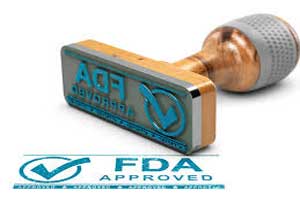- Home
- Editorial
- News
- Practice Guidelines
- Anesthesiology Guidelines
- Cancer Guidelines
- Cardiac Sciences Guidelines
- Critical Care Guidelines
- Dentistry Guidelines
- Dermatology Guidelines
- Diabetes and Endo Guidelines
- Diagnostics Guidelines
- ENT Guidelines
- Featured Practice Guidelines
- Gastroenterology Guidelines
- Geriatrics Guidelines
- Medicine Guidelines
- Nephrology Guidelines
- Neurosciences Guidelines
- Obs and Gynae Guidelines
- Ophthalmology Guidelines
- Orthopaedics Guidelines
- Paediatrics Guidelines
- Psychiatry Guidelines
- Pulmonology Guidelines
- Radiology Guidelines
- Surgery Guidelines
- Urology Guidelines
Spinal Cord Stimulation system for chronic pain treatment receives FDA approval

The U.S. Food and Drug Administration (FDA) has granted approval to the medical device company Nevro for the Senza Omnia Spinal Cord Stimulation (SCS) System. The system is meant for the treatment of chronic intractable pain of the trunk and/or limbs. Chronic pain is long-term pain that lasts for at least 12 weeks.
The Omnia system is the first and only SCS system designed to deliver Nevro's proprietary HF10 therapy in addition to all other available SCS frequencies. Other SCS systems on the market are limited to a frequency below 1500 hertz. Omnia delivers the widest range of frequencies of any SCS system, between 2 and 10,000 hertz. In addition to HF10, Omnia offers the most waveforms in a single product and can be programmed to provide waveforms independently or paired with HF10. The pairing of waveforms across frequency ranges enables dual mechanisms of action that no other system can offer.
The system is comprised of three new components. The first is a new programmer that will make it easy for physicians to offer a wider array of waveforms across the full SCS frequency spectrum, either separately or paired together. The second element of the system is a redesigned patient remote that is smaller and more intuitive for patients to use and enhances their experience. The new remote supports greater programming capacity, allowing for the flexibility to expand on the HF10 algorithm by giving physicians the ability to provide additional waveforms. Lastly, the system comes with an updated and upgradeable implantable pulse generator.
Unlike non-rechargeable systems, the Omnia system is designed to last over ten years no matter what stimulation profile is used, has conditional full-body MRI approval and will be upgradeable to future waveforms and frequencies.
"The Omnia system was developed based on feedback from the pain community and has resulted in a product that Nevro is uniquely able to provide. Omnia not only offers HF10, the most studied therapy available in the market that physicians have provided to over 53,000 patients, but it also gives physicians access to all other SCS frequencies, either independently or paired with HF10," said Keith Grossman, Chairman and CEO of Nevro in the company's press release. With Omnia, our goal is to provide physicians with the peace of mind that when they implant the system, they will have the versatility needed to achieve the best possible outcomes for their patients."

Disclaimer: This site is primarily intended for healthcare professionals. Any content/information on this website does not replace the advice of medical and/or health professionals and should not be construed as medical/diagnostic advice/endorsement or prescription. Use of this site is subject to our terms of use, privacy policy, advertisement policy. © 2020 Minerva Medical Treatment Pvt Ltd